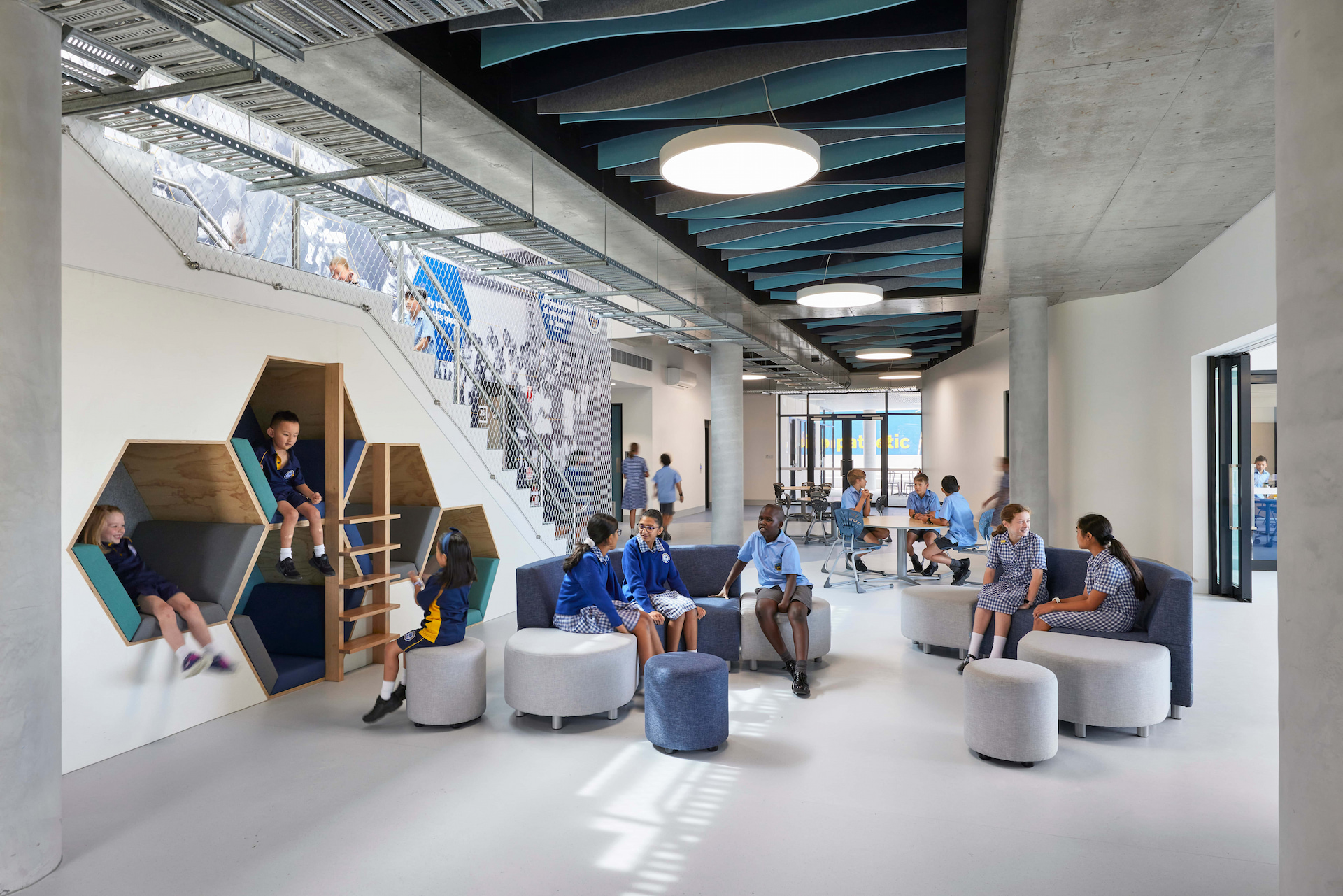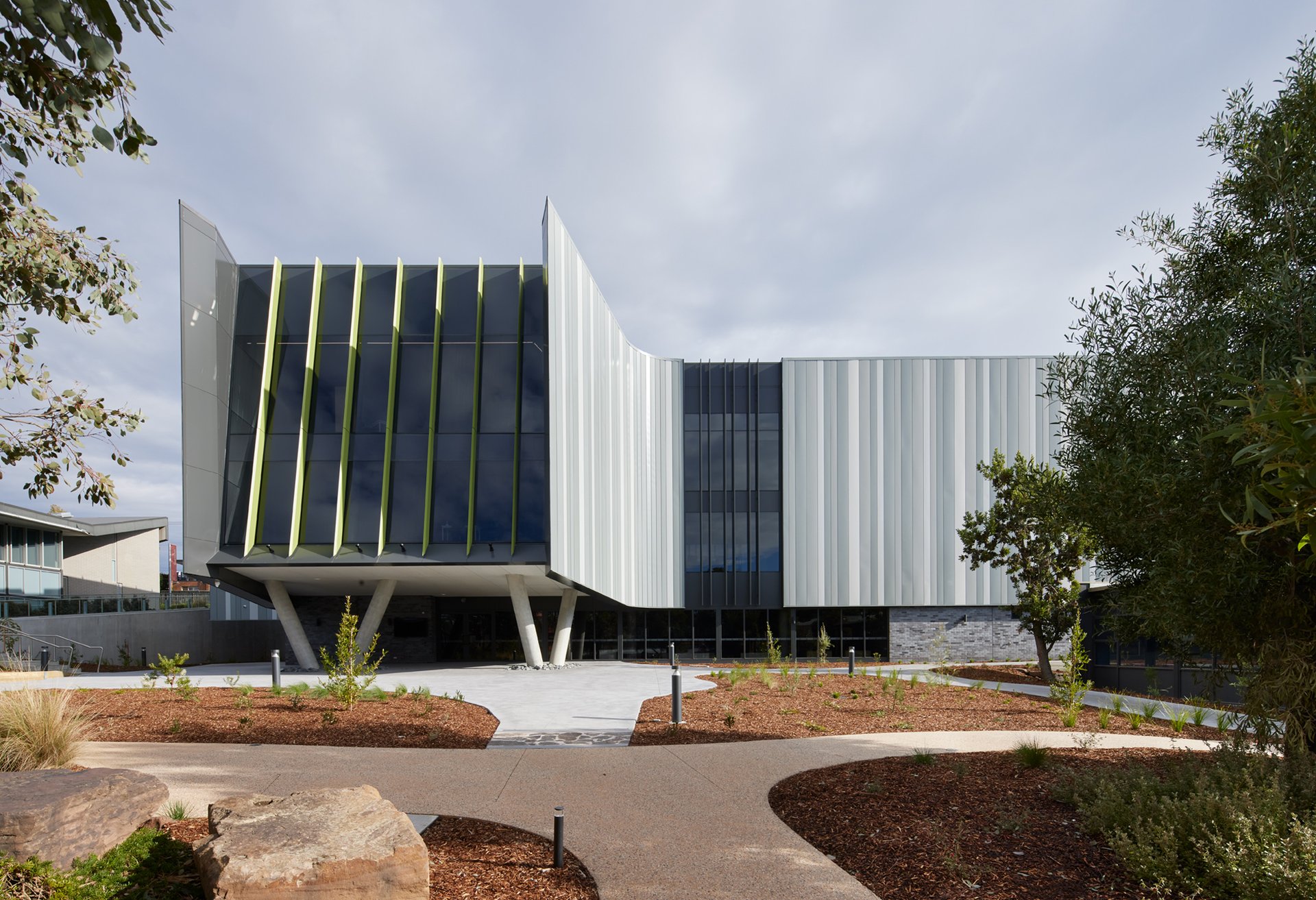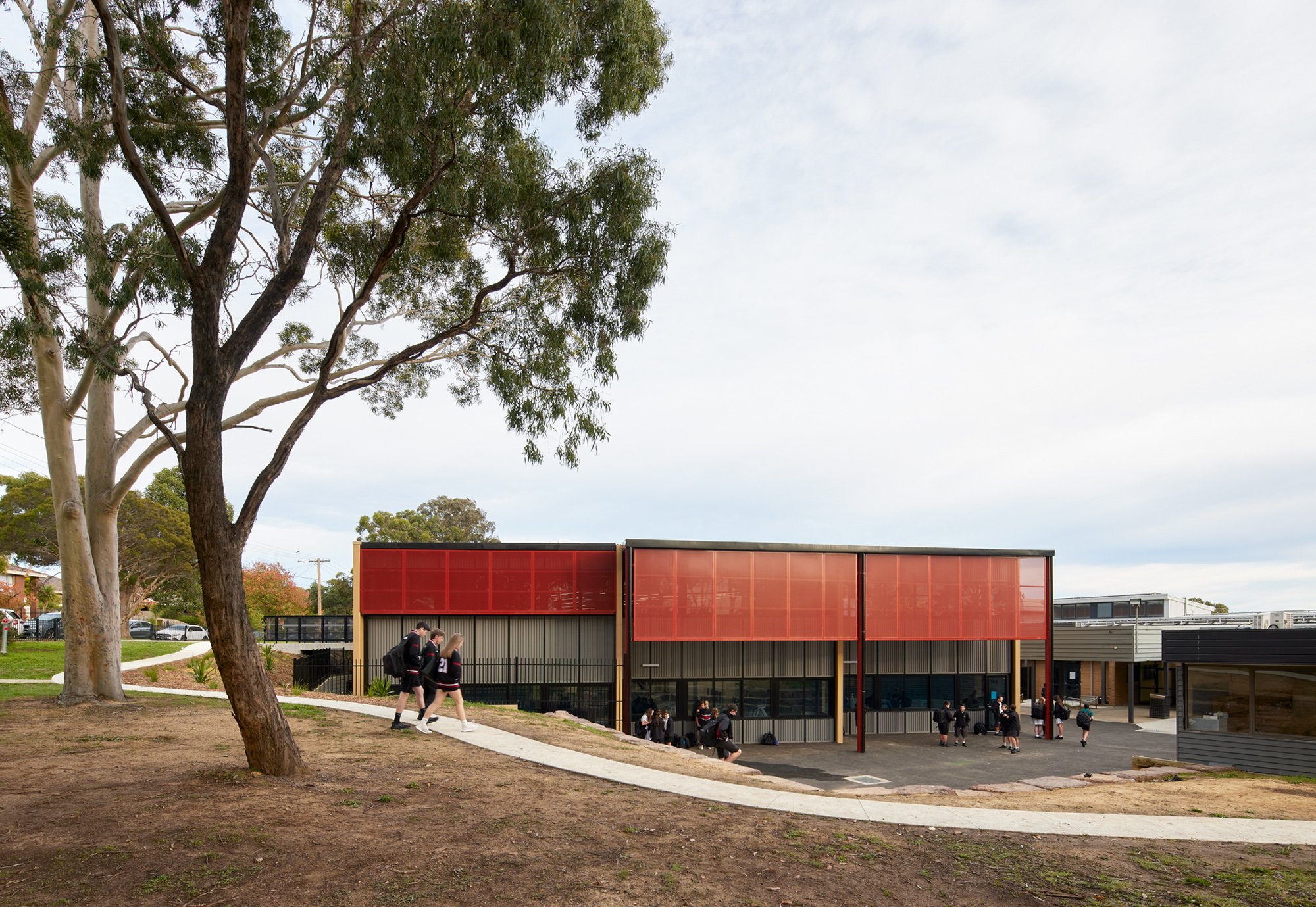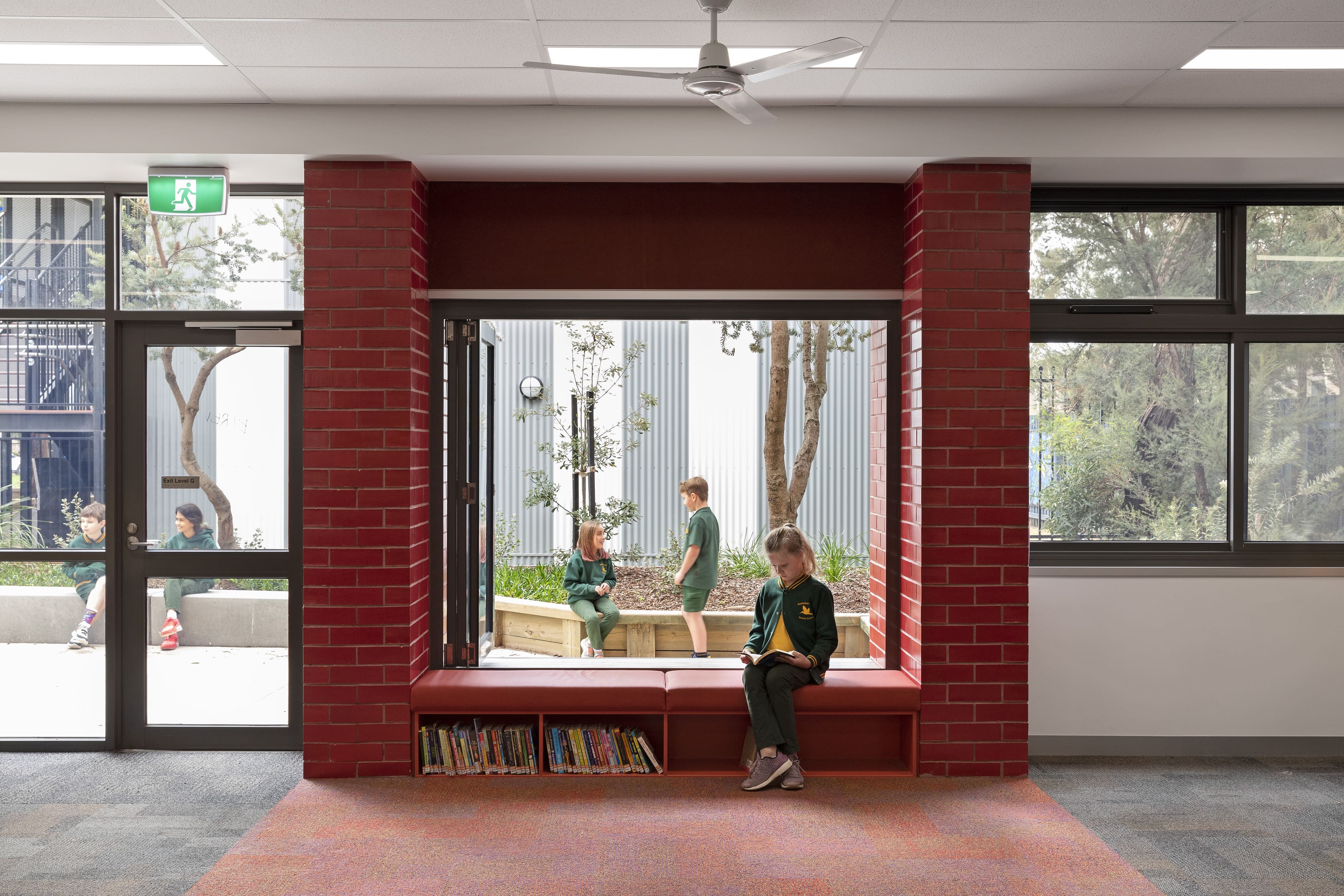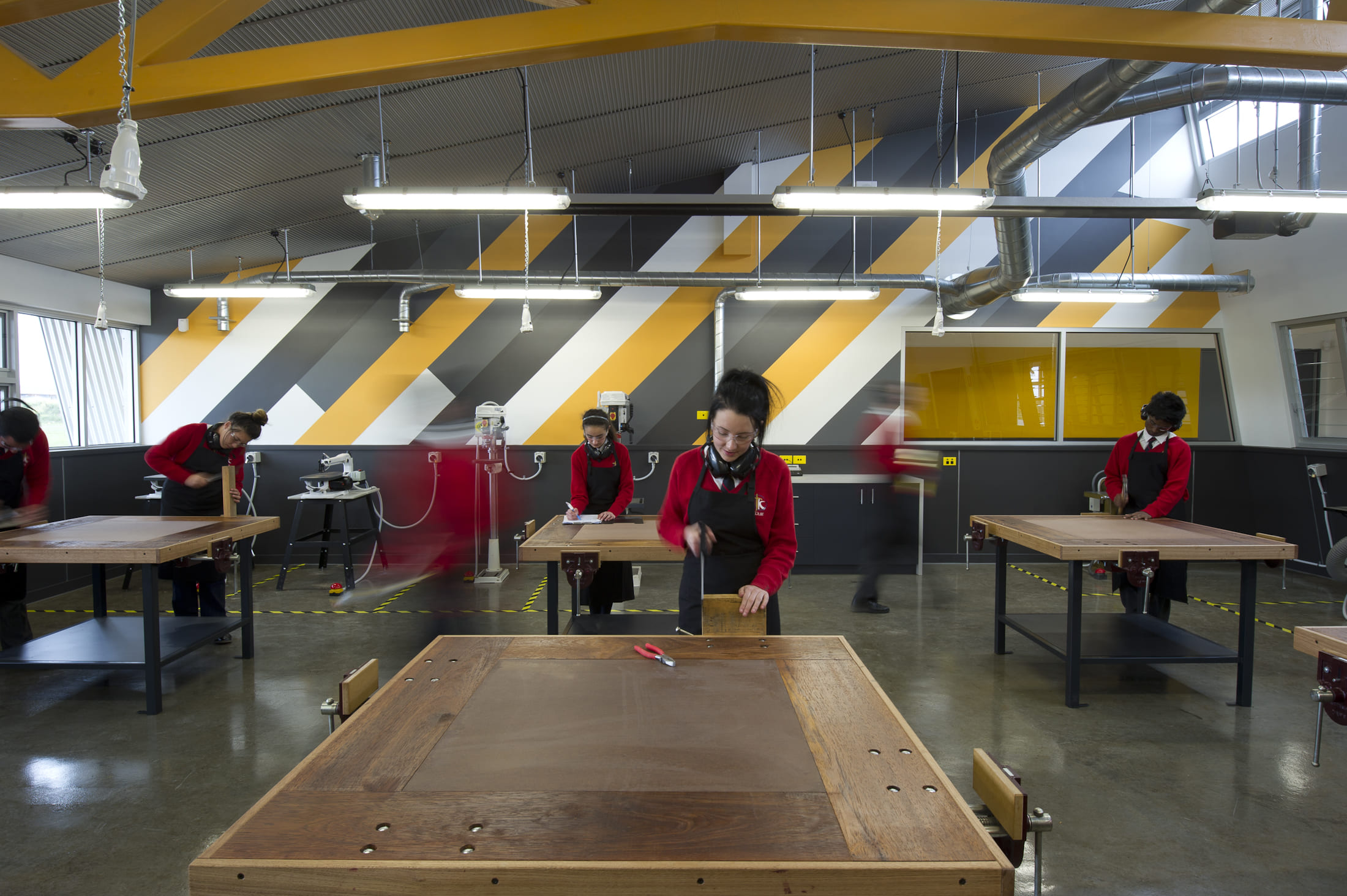
Managing the complexity in constructing innovative spaces for learning

Having worked on many construction projects in education settings, at 2Construct, we’ve seen firsthand the positive impact a flexible education space has on educators and students.
For schools and educational institutions wanting to develop or redevelop their learning spaces, the challenge lies in managing the complexity of ‘business as usual’ while the school’s and architect’s vision is executed.
While all construction projects present their own set of challenges, we’ve found construction projects in education settings have added challenges. It’s this unique complexity that informs our approach to the way we manage construction works while working in a live school environment.
Creating flexible learning environments
FULL STEAM AHEAD
STEM is well known in school settings as an interdisciplinary and applied approach to science, technology, engineering, and maths. STEAM, with the addition of an ‘A’, also includes the arts. STEAM learning challenges ALL students to solve real-world problems through hands-on learning and creative thinking. This type of learning impacts the design of spaces where students can flourish.
THE IMPACT OF FLEXIBLE AND INCLUSIVE LEARNING ENVIRONMENTS
Flexible learning environments allow teachers to have full control over how they use their classroom space.
When teachers can easily move furniture around and give their students the most appropriate space in which to learn, those students can achieve better outcomes. In the ideal learning environment, teachers have the flexibility of designing lessons where students can work alone independently, collaborate in small groups, or interact with the whole class.
By catering to the personality and learning style of students, a well-designed and constructed flexible learning environment complements the creative and scientific nature of the STEAM curriculum. The design of a STEAM learning space needs to serve students and teachers.
Students engaged in the STEAM curriculum learn to think more innovatively and feel safe expressing their creative ideas. The hands-on learning approach gives them real-world learning opportunities that will help them thrive. Within the different spaces in their adaptive classroom, they can take ownership of their learning.
All of these skills—which are in high demand thanks to global skill shortages—will help produce the creative, problem-solving mindsets our future demands. 2 Construct understands that with the right learning environment and guidance, we will see today’s students transform from users of technology into creators of tomorrow’s technology.
Learning environments beyond the classroom
We’ve seen the application of innovative learning spaces extend beyond the walls of the traditional classroom. Performing arts venues with studios and theatres, sports facilities with pavilions and pitches, and creative arts spaces are all examples of exciting projects we’ve built that allow the principles of STEAM learning to be applied and flourish in other education settings.
We’ve collaborated successfully with many Victorian schools to develop integrated, flexible learning environments. From STEAM-centred classrooms to sport stadiums and the spaces for creative and performing arts, some of our innovative projects include:
St Kevin’s College Tooronga Sports Training Facility >
Santa Maria College Performing Arts Centre >
University of Melbourne Bio21 Science Sub School >
Kolbe Catholic College Industrial Arts Centre >
CRC Caroline Springs New Performing Arts and Student Dining >
Yarra Valley Grammar Art, Design and Technology Wing >
Keeping students, staff and school visitors safe
As a leading construction company trusted by schools to build the flexible environment their school needs, risk mitigation is also an important part of our approach to ensure staff and students stay safe during and after construction.
We develop tailored OH&S, quality and environmental procedures, and Safe Work Method Statements (SWMS) specifically for works on projects in education settings. This is all designed to mitigate risk, allowing us to focus on delivering an innovative learning space.
WORKING WITH CHILDREN CHECKS
Because our construction team works near students, all workers must have Working with Children Checks (WWCC) before they can start working onsite. But we go even further. We store our WWCC licences in our cloud-based risk management software for daily compliance monitoring.
Alongside alerts for lapsing WWCC licences, we screen and supervise all staff working onsite. Our Site Manager or Leading Hand will be onsite full time. They are the constant point of contact, ensure control of the site, and oversee all site personnel at all times.
SEPARATE ACCESS TO THE CONSTRUCTION SITE FROM SCHOOL ACCESS
We keep the construction site and site compound entry separate from the school access points to help ensure our construction team has no interaction with students and school staff. We do this by installing temporary fences or solid barriers, which are regularly inspected and maintained for the duration of the project.
If we need to attend to any works outside the construction site, we coordinate those ahead of time with the school management and staff. Our team wears appropriate visible identification whenever they need to be on school grounds.
QUALITY ASSURANCE CHECKS
As part of our quality assurance and due diligence procedures, we assess all access equipment, scaffolding, fencing, site vehicles, plant and equipment before it arrives at the construction site. This ensures they are safe and appropriate for the space where they will be used.
ZERO TOLERANCE POLICY
Smoking is banned on site. Working with the school, we agree to an appropriate location off site where team members can smoke.
Alcohol and illicit drugs are also banned from all our sites. We take a zero tolerance approach, keeping everyone safer.
Minimising disruptions
Part of the complexity of managing school projects is getting the timing of trades right to minimise disruption.
From the time the project becomes a work site until its completion, it presents unique challenges to both the school and the construction company.
As well as separate entries for school and the construction site, we’ve found many other ways to minimise onsite disturbance.
DELIVERIES
To avoid disrupting neighbours, we do not permit deliveries before 7am. We work with the school to set appropriate times for receiving deliveries. We also arrange delivery times to avoid peak pick-up and drop-off times.
NOISE DISTURBANCE
Construction work can be noisy and disruptive. That’s why we coordinate noisy works and services shutdown with the school.
Noisy works are never carried out during the school exam periods or other critical school times.
If demolition works within existing school areas are required, wherever possible, we carry them out over non-school times or on weekends.
Our team does not play loud music on site. Our protocols also ensure they are not permitted to swear or have inappropriate discussions in situations where students could overhear them.
2Construct’s collaborative approach to managing education construction complexity
To implement our accredited Integrated Management Systems, we use several technology-based computer software packages and portals to help with the management of the day-to-day operations. This ensures we continue to follow the requisite quality, environmental and OH&S standards.
As part of our commitment to quality and best practice, our Commissioning Manager joins each project 6 to 8 weeks before practical completion. The Commissioning Manager develops completion schedules, engages subcontractors and manages defect sign-off up to practical completion. They then monitor any project issues throughout the defect liability period, giving schools the peace of mind that defects will be rectified. We use an online management system called Hammertech to record, communicate, track and close out items to be addressed. This gives us and schools a clear and exact view of the project’s status.
Despite these extensive systems and protocols, our greatest tool for success is maintaining open, personal and transparent communication during the project, which is vital to its success. Collaboration with stakeholders is essential. Understanding the school’s master plan, the architect’s grand vision and the needs of educators and learners— balanced with the critical requirement to mitigate risk — are the cornerstones of 2Construct’s safe approach to managing the construction of flexible learning spaces that will help students thrive and achieve their best outcomes.
